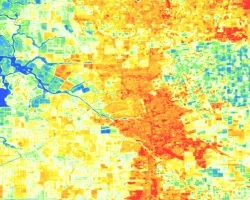The Hindu Kush Himalaya (HKH), and downstream areas in South Asia, experience some of the most significant sub-seasonal to seasonal (S2S) variability on Earth. The South Asian monsoon is both the lifeblood of the region and a source of significant hazard. Its precipitation sustains agriculture, feeds mountain snowpack and glaciers, and replenishes surface and groundwater resources. But torrential monsoon rains cause floods and landslides, sub-seasonal monsoon dry spells can cause crops to fail, and years ofweak monsoon can endanger food and water security across the region. S2S prediction in the HKH is a grand challenge for climate research and modeling, but significant progress has been made in recent years. Forecasts like those produced by the NASA GlobalModeling and Assimilation Office (GMAO) and the NOAA Climate Prediction Center (CPC) now offer meaningful skill that can be applied to disaster preparedness and water and agriculture management. Moreover, integrating S2S forecasts with NASA Land Data Assimilation System (LDAS) capabilities adds substantial value for hydrological prediction, as the LDAS provides optimal estimates of initial conditions, tools for correcting and downscaling forecast meteorology, and integrated predictions of snowpack, soil moisture, and river flow informed by the forecast, the understanding of hydrological process embodied in LDAS models, and satellite-derived information on initial hydrological conditions. 18Recognizing the value of S2S-LDAS systems to the HKH, we propose to augment an existing South Asia LDAS with S2S forecast capabilities. The system leverages an ongoing partnership between NASA, Johns Hopkins University, and ICIMOD that includes establishing NASA Land Information System (LIS)-based LDAS capabilities to SERVIR-HKH. Under the proposed initiative the project team would collaborate with ICIMOD to establish decision relevance of an S2S-LDAS for SERVIR-HKH stakeholders, transfer operational S2S-LDAS capabilities to the SERVIR-HKH node, and develop appropriate dissemination and communication tools. As an extension, the S2S-LDAS capabilities established during this project will also be applilied for climate change scenario analysis.
Project


